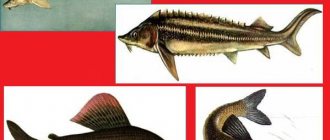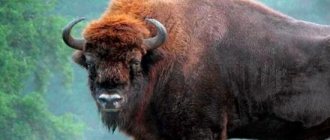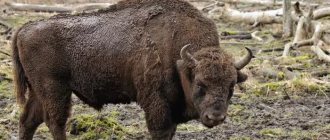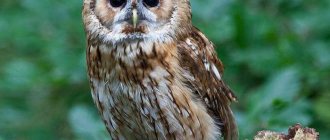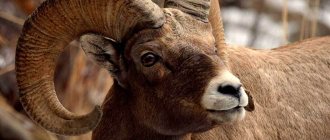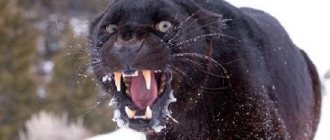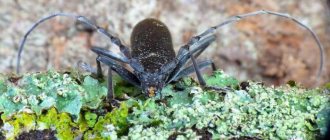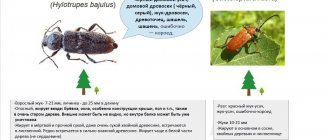The large oak longhorned beetle is a coleopterous insect that belongs to the longhorned beetle family. This species is of Mediterranean origin. It is found in the southern and central regions of Europe, the north of the African continent and Asia Minor. In the post-Soviet space, the beetle is common in countries such as Ukraine and Belarus. It can often be found in the Caucasus. The oak longhorned beetle is mainly found in mixed parks and forests and in old overmature oak forests. Insects often settle on lonely trees.
A little bit of biology
Longhorned beetles have fairly small sizes (from one to several tens of millimeters), a flat body and mustaches, which are the main organ of smell.
The color of lumberjacks is usually brown or dirty gray; less commonly, the longhorn beetle is black. The photo allows you to examine the insect in more detail. The larvae of the pest are characterized by particularly powerful jaws, thanks to which they can handle both hard wood and soft metal with a cable-type coating. However, the beetles do not eat the latter so readily, preferring wooden structures and stacked boards.
The female barbel lays her eggs (from 200 to 400 pieces) in recesses or cracks in the tree, and after 7-14 days the larvae are born, which instantly activate the process of destroying the tree.
It is worth emphasizing that it is almost impossible to immediately notice a tree disease, since the larvae lead a hidden lifestyle. So, you can understand that your wooden house has succumbed to the harmful effects of longhorned beetles only when the real results of their work (destroyed and loosening wood) are visible.
Notes
- ↑
- ↑
- Striganova B. R., Zakharov A. A.
Five-language dictionary of animal names: Insects (Latin-Russian-English-German-French) / . - M.: RUSSO, 2000. - P. 152. - 1060 copies. — ISBN 5-88721-162-8. - ↑
- ↑ Cherepanov A.I.
Longhorned beetles of Northern Asia (Cerambycinae) / Violovich N.A. - Novosibirsk: “Science”, 1981. - T. II. - pp. 175-179. — 215 p. — 1000 copies. - ↑ Plavilshchikov N.N.
2 // Fauna of the USSR. Coleoptera. Woodcutter beetles / Zernov S. A. - Moscow-Leningrad: Academy of Sciences of the USSR, 1940. - T. XXII. - pp. 507-512. — 785 p. - (22). — 1000 copies. - ↑
- Kostin I. A.
Dendrophagous beetles of Kazakhstan (bark beetles, woodcutters, borers). - Alma-Ata: “Science”, 1973. - P. 242-243. — 287 p. — 1400 copies. - ↑ Identifier of forest pests / Ilyinsky A. I. - Moscow: Selkhozizdat, 1962. - P. 317. - 392 p.
- Key to insects of the Russian Far East. T. IV. Reticuloptera, Scorpioptera, Hymenoptera. Part 5 / under general ed. P. A. Lera. - Vladivostok: Dalnauka, 2007. - P. 675. - 1052 p. — ISBN 978-5-8044-0789-7.
Appearance and features
Description of the insect
Common crabgrass (lat. Lethrus apterus), or bighead crabgrass, lives in the steppes and forest-steppes west of the Don. It is often also called the snow beetle. This is a close relative of the dung beetle, they are part of the same family of dung beetles. The dimensions of the kravchik are 15–24 mm. This beetle is black, slightly shiny, sometimes with a bluish tint, and in rare cases with a faint copper sheen.
The main identifying mark of the insect is a very large head (for which the beetle is also called a bighead) and long upper jaws, which in males have two large processes below. If you take the beetle in your hands, it moves its mandibles quite threateningly, and males often use the processes on the jaws in mating games and fights. The elytra are fused along the seam and are very short. This beetle cannot fly because its wings are not developed, but its legs are very strong.
Where do kravchiki live?
Crawfish are often found in ravines, on steppe slopes and railway embankments, and on roadsides.
The beetles are notable for the fact that they dig quite deep holes for themselves. They overwinter in burrows and come to the surface from mid-March to July. Most of the beetles emerge from April to early June.
After emerging, the beetles dig temporary sloping burrows to a depth of 15–20 centimeters. They climb into them at night and in times of danger, and on warm days they actively search for food.
Reproduction
The reproduction of this insect is very interesting. After mating, the male and female make themselves
Kravchiki throw the cut on the ground and make a kind of silage cube, soaking the plant mass with the secretions of their salivary glands. The beetles fill the chambers with such cubes, and when everything is full, they cover the entrance with earth. The plant matter ferments and turns into a kind of silage.
Larvae
The hatched larvae feed on what their caring parents have prepared for them. White, thick, twisted larvae with very short legs and a small head molt several times, grow to a size of 4 centimeters and after three weeks turn into a pupa.
When adult beetles emerge from the pupae after a couple of weeks, they remain for the entire fall and winter in the “apartment” prepared by their parents, and crawl out of it only in the spring. The beetles live for more than one year (like fragrant woodborers) and usually dig burrows for the winter next to their offspring.
The sky barbel got its name due to its color: it has pale blue hair.
Sky barbel, appearance
The barbel is a medium-sized beetle, its body length is 1.5-3.5 cm. It has a flat and elongated body. It has a distinctive blue coloration with black spots on the cheeks, scutellum and pronotum.
On the elytra of the beetle there are three rows of wide transverse bands: the upper one is intermittent, and the middle and back ones are closed.
In males, segments from the third to the sixth, and in females from the eighth, are covered with black hard hairs.
The barbel has hard elytra, with wings hidden under them. The paws are walking type, they consist of five parts. The limbs are black, but there are small blue areas on the thighs and legs. The hind limbs are much longer than the forelimbs.
The beetle has antennae that are longer than its body. They have a striped bluish-black color. At the base of the antennae there are complex compound eyes with a notched shape.
We invite you to familiarize yourself with the layout of a 3x5 bathhouse with a separate sink and steam room.
Insects do not have pronounced sexual dimorphism: in both females and males, the genital organ extends beyond the end of the abdomen.
Description
Large beetle 35-55 mm long. The body is shiny, the color is resinous, black-brown with lighter and reddish apices of shagreened elytra. The abdomen and legs are covered with short grayish hairs. The pronotum is roughly wrinkled with sharp lateral spines. The antennae in males are 1.4-1.7 times longer than the body, in females they are equal to it.
Features
The following signs may indicate that there is a longhorned beetle in the house:
- the presence of small holes and passages on the surface of the wood;
- rustling, clicking and ticking - these are the characteristic sounds that longhorned beetles make when gnawing passages in the wood of a house;
- brown or yellowish powder (drill flour);
- the presence of pests themselves flying around the house.
Therefore, if you detect the listed symptoms, it will not be superfluous to know how to get rid of the longhorned beetle in a wooden house.
- Long mustache. The longhorned beetle has prominent whiskers that are 2-5 times longer than the insect itself.
– Slender and elongated body. The length of the body varies from 3 to 60 mm.
- Wings. Some species of woodcutter beetles can fly.
- Hair.
Enemies of the insect
In nature, the oak barbel has many enemies. The woodpecker is considered especially dangerous because it feasts on beetle larvae living in wood. Some insects belonging to the order Hymenoptera (for example, encyrtids) can parasitize beetle eggs. Some species of predatory beetles prey on longhorned beetle larvae:
- toddler;
- nutcracker;
- moth
Where can I meet you?
The longhorned beetle can live and reproduce not only in various tree species, but also in shrubs and herbaceous plants. Longhorned females lay their eggs in a crack in tree bark, in depressions on branches, trunks or stems. Moreover, the pests make these cracks and gouges themselves.
Lumberjacks can “visit” you at your dacha, and the forestry industry can “boast” of such guests. In country houses, the objects of pest attack are furniture, boards and other wood products.
Character and lifestyle of the woodcutter beetle
The longhorned beetle, also known as the woodcutter, is widespread throughout the world, and their densest concentrations are found in places where the largest number of food plants of tree species are present. Representatives of 583 species of these pests are found in Russia, 1.2 thousand species in the USA, and about 280 species in Ukraine.
Most longhorned beetles have a similar description. Their body is of medium size, and there are long antennae on their heads. The color of the integument will depend on the species. These parasites have pronounced sexual dimorphism - the antennae of females are much shorter, the abdomen is more rounded, and males are distinguished by an elongated upper jaw.
In addition, females and males of the same species can have different colors. Regardless of gender, on the posterior edge of the prothorax, these beetles have a so-called rib, with which the insects make characteristic sounds when they rub it against the surface of the mesothorax. But there are also types of longhorned beetles, representatives of which reproduce the creaking of the hips of the hind legs when they rub against each other.
The largest representatives of the longhorned beetle family deserve special attention:
- Titan woodcutter - the length of its body can reach very impressive sizes and there are specimens reaching 16.7 cm in length;
- the Brazilian bigtooth woodcutter is another giant in the world of insects, its body length is about 16.9 cm, but a significant part of the length is occupied by mandibles;
- black longhorned beetle - its body length varies from 15 to 40 mm and, in large concentrations, representatives of this genus can cause serious damage to coniferous trees;
- Ussuri relict longhorned beetle - it is considered the largest beetle in Russia and its body size is about 11 cm in length.
Depending on the species, longhorned beetles differ in body structure, coloration of the integument, and also the sculpture of the elytra. Some have spines, tubercles on the pronotum and outgrowths.
Larvae
Longhorned beetles choose cracks and small holes in wood for masonry, or gnaw them out on their own. The larvae emerging from the eggs have a body length of no more than 3 cm and are white or light yellow in color. The body shape is slightly flattened, the prothorax is well developed and the head is slightly retracted into it, at the end of which there are powerful dark jaws.
In the struggle for life, the longhorn beetle larva shows very enviable resilience.
Under normal conditions, the larva turns into a pupa and only then into a beetle.
Nutrition
What does the longhorned beetle eat? The diet of adults consists mainly of pistils and stamens of flowers, as well as young bark. The larvae feed on the wood in which they spend their development period. Moreover, these can be both deciduous and coniferous trees.
Longhorned beetles, also known as Hylotrupes bajulus, are most often found in wooden houses. The sizes of representatives of this genus range from 8 to 20 cm. The color can be brown, dirty gray or black. Their favorite habitats, which automatically become sources of food, will be:
- partitions made of wooden beams;
- wood upholstery;
- floor boards;
- ceiling rafters;
- window frames;
- attic beams.
We invite you to familiarize yourself with the Dadan hive drawing for 10 and 12 frames
Despite its impressive size, the longhorned beetle does not pose a danger to humans. It can only harm wooden buildings.
The lifestyle of woodcutter beetles depends on weather conditions and habitat. The flight of individuals living in the southern regions begins in mid-spring.
Representatives of the order Coleoptera, inhabiting the Central Asian territory, begin flight immediately at the beginning of autumn.
Some species of woodcutter beetles, which prefer to feed on flowers, lead a predominantly diurnal lifestyle; the peak activity of other species, on the contrary, occurs at night.
During daylight hours they usually rest, hiding in hard-to-reach shelters.
Does the woodcutter beetle bite? Despite the fact that some species can easily chew through a pencil, a person should not be afraid of a barbel bite, since it is not capable of causing serious harm to him. And a negligible number of such cases have been recorded.
Knowing how to deal with woodcutter, you can protect your garden plants, wooden walls and home furniture from the beetle.
Pests that live in close proximity to humans are mainly nocturnal, so detecting them in daylight is not always easy.
However, it is worth knowing that this beetle is moisture-loving, and the female leaves larvae in cross sections and various crevices in rooms where the humidity is higher than normal.
You can fight it either by freezing objects to a temperature of minus twenty degrees (which is not feasible in all cases), or by treating the entire structure with a poisonous gas called methyl bromide.
Features of beetles
The lifestyle of woodcutters depends on weather conditions and the area in which they live. Beetles that feed on flowers are active during the day. Others, such as the titanium barbel, leave their shelters exclusively at night. In some species, males tend to migrate, while in others, only females.
Large oak longhorn beetles emerge from their secluded hiding places at the end of May. They are especially active at the beginning of summer, preferring to fly during the daytime. Their favorite habitats include isolated trees or oak forests.
Much less often, large oak longhorn beetles can be found on walnut or apple trees. They do not have much love for ash, hawthorn and hazel.
Spreading
The oak barbel inhabits all of Europe and a small part of South-West Asia. Its habitat covers the territory from Saudi Arabia to the Mediterranean Sea and to the south of Sweden, from France to Western Ukraine. The insect can often be seen in the Caucasus.
The beetle has perfectly adapted to temperate climates and is able to withstand severe frosts. Despite its wide habitat, its colonies can only be observed where there is a sufficient food supply. Insects love places warmed by the sun and prefer unshaded trees.
Reproduction
The barbel is distinguished by the fact that it leads a sedentary lifestyle. It can infest the same tree with larvae for several years.
Adults are active during the daytime and can most often be seen between 12:00 and 16:00. The beetles' summer period runs from the second half of July to the beginning of August.
Adults live for only two weeks. Immediately after emerging from the pupa, they look for partners to mate with.
A fertilized female lays eggs under the bark of trees, one at a time or in a small group of 3-5 pieces. She prefers to hide eggs in the trunks of withered green maple, and less commonly, Japanese elm. The clutches are located at a height of 0.5 to 10 m. The fertility of a female sky longhorned beetle is 50-80 eggs.
The eggs are light in color and oblong in shape. Their length is 3 mm and width is 1 mm.
2-3 weeks after laying the eggs, the larvae hatch. They are light in color with a brown head capsule. The pronotum has a red stripe and dense hairs. The length of the larvae is about 3-3.5 cm. The motor calluses are covered with wrinkles. The larvae lead a secretive lifestyle. They live in wood, where they make longitudinal passages 6-9 mm wide, filling them with fine drill flour.
The female lumberjack lays eggs in natural cracks in the bark or in makeshift depressions in the branches or trunk of a tree. The larvae feed and grow, as a rule, in the wood of bushes or trees, but some species are able to develop in grass.
The development period of the larvae depends on the size of the adult insect and the nutritional value of the habitat. The smallest representatives reach sexual maturity within a year, and large species living in dry wood can develop from 3 to 20 years. If during this time the larva does not receive sufficient nutrition, it can transform into a dwarf beetle, which is half its normal size.
Despite the fact that the large oak longhorned beetle lives for about 3 months, the female manages to lay about a hundred eggs during this period. She looks for a place to lay eggs with the help of her mustache, which serves as her sense of smell (males use their mustache to find a partner). When choosing a tree that serves as a home and source of food for longhorned beetles, insects examine its condition. More often, beetles settle in dead or rotting wood. But they can also choose a healthy tree, which causes damage to humans.
We invite you to familiarize yourself with wood ash chemical composition
Lifestyle of a beetle
Usually the female makes a cradle for her future offspring in cracks in the tree bark. Old oaks, hornbeams, elms or beeches are especially suitable for this. After 15 days, larvae emerge from the eggs and develop for more than two years. The photo and description of the larva of the large oak longhorned beetle is not much different from the larvae of its relatives.
On the small, brown-red head of the larva there are 3 eyes and powerful jaws. It moves along the passages gnawed in the wood with the help of abdominal and dorsal growths, which are also called calluses. Before the pupation period begins, the larva gnaws a tunnel in the tree, the length of which can reach 1 meter.
Wood processing by professionals
It is often difficult to cope with the task on your own, at home. In this case, you can invite professionals who:
- The wood will be treated using fumigation.
- Microwave disinfestation will be carried out.
Each method has both advantages and disadvantages.
Fumigation
This is a method of treating wood with poisonous gases. Nowadays, this method is not often used, since the gas does not have high permeability and it is not possible to destroy the larvae inside the wood.
There is a similar method when drugs, in the form of tablets, decompose when exposed to air. As a result, phosphine gas is released. In one day, the product destroys all beetles and larvae, as well as eggs. The tablets decompose within 2 days.
Advantages of this method:
- Possibility of 100% destruction of all pests.
- The warranty covers 10 years.
- It is possible to cover a large area in a short period of time.
The disadvantage of the method is the high toxicity of the substance.
Microwave disinsection
Eggs and larvae die at temperatures of +55 degrees and above. If they are exposed to microwave installations that emit microwave waves, then the eggs and larvae begin to heat up, which is why they die. Microwave waves do not cause any harm to wood.
Advantages of the method:
- Microwave devices are safe for both people and pets.
- The method allows you to quickly and effectively get rid of pests.
- The method works in all weather conditions.
The only drawback is the nature of the work, since you have to look for places where woodcutter beetle larvae spoil the wood. Therefore, specialists use a special device - a stethoscope. Using this device, they listen to the house meter by meter and determine where the larvae are.
Longhorned beetle: how to get rid of it?
The barbel pest poses no danger to humans. It is only dangerous for the tree.
Special means of varied action will help you fight barbels in your own home. Which specific product to choose in this or that case is entirely up to you!
– Contact. They manifest their effect directly upon contact with the longhorned beetle. Such products are not popular because their use can be harmful to human health.
- Intestinal. Such agents include sodium fluoride, zinc chloride and other components that exert their harmful effects on the insect through the intestines.
- Fumigants. These are gaseous and vaporous substances: sulfur dioxide, dichloroethane, etc.
Remember that solid wood, on the surface of which there are no cracks or other defects, is not of interest to pests. The longhorned beetle will live and reproduce only in cracks. Therefore, you can’t go wrong if you pour a special product into the grooves of the wood panel with a syringe, and then cover these holes with wood putty or ordinary plasticine.
Remember that it is very difficult to overcome barbels! It is much easier to resort to preventive methods, for example, using exclusively wood impregnated with fungicides for construction purposes.
What harm does
The large oak longhorn beetle is one of the most dangerous wood pests. The damage it causes to the tree is already obvious after the beetle larvae reach one year of age. When there is a large concentration of insects, the color of the foliage and its condition changes, it becomes withered. Young shoots also dry out, which hinders the growth and development of the plant. Therefore, it is advisable to get rid of the pest. Damaged wood can subsequently only be used as firewood.
Therefore, in the old days, when a large population of beetles was discovered in an oak forest, they tried to quickly get rid of the infected stands by uprooting or sanding all the remaining oak stumps. However, these days there are not so many perennial oak forests left, and the formerly large mustachioed pest has become no less a rarity. In connection with which it was even included in the Red Book.

